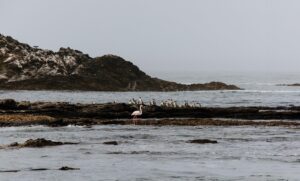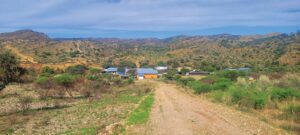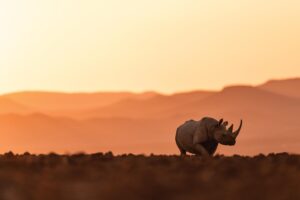

Namibia Travel Tips
From the Spring 2021 issue
SEASONAL TIPS FOR TRAVELLERS
- The best time to visit Windhoek and the surroundings is between May and September when it is cooler and dry. In the rainy season from November to March it is hot and somewhat humid, sometimes with heavy rains.
- As for southern Namibia and the desert areas around Sossusvlei, it is best to avoid the summer months when temperatures can be extreme. Temperatures between May and September are generally milder and more comfortable, but keep in mind that it can be cold in winter, especially at night.
- The climate in Lüderitz and at the southern coast is hospitable from February to May, but quite cool all year round, and particularly windy in August.
- From October to March is the best time to visit the coastal towns of Swakopmund, Walvis Bay and Henties Bay, as weather conditions are particularly pleasant compared to the hot interior. When dry easterly winds blow, however, it can also be very hot.
- To the north, the Skeleton Coast has much the same moderate weather, with mist, wind and very little or no rain all year round. For fishing enthusiasts, this area is at its best between November and March.
- In Kaokoland, a good time to visit is from May to August when it is cooler. The summer months bring extremely high temperatures and occasionally flash floods, as most of the scarce rain falls between January and March.
- The best time to visit Etosha is from April to September when the temperatures are tolerable, especially at night. This is also the best time for game viewing because animals flock to the waterholes to drink. For bird-watching, on the other hand, summer is more suitable, as scores of migratory birds arrive in the park after the summer rains.
- Summer is hot and humid in the Kavango and Zambezi regions in the northeast, but as in Etosha it is the best time for bird-watching. Rain and seasonal flooding may make some of the roads inaccessible, however. It is advisable to enquire about road conditions before embarking on a trip. April to October are the best time for game viewing in Zambezi. It is much cooler and drier then, with practically no rain.
- April and May are particularly pleasant months in Namibia. Usually the last rains of the season have fallen, the air is fresh and free of dust, and the land is green, vibrant and full of new life.
- During the winter months from June to August the whole country cools down and nights can be quite cold. As it becomes drier, the game in parks and reserves migrates to the waterholes and is easier to spot.
- By September and October temperatures rise again and game viewing in most areas is at its best, although there is often a lot of dust around and the vegetation has lost its vibrancy.
- November is a highly variable month. Sometimes the hot, dry weather will continue, at other times it might be humid, the sky will fill with clouds and the first thunderstorms and rains might occur.
STAY CONNECTED
Most accommodation establishments offer WiFi to stay connected with friends and family or to share holiday photos on social media. It is recommended that visitors buy a sim card for possible emergencies on self-drives. Pay-as-you-go options are available from one of the local service providers. Cell phone coverage along main roads is good in general.
MALARIA
- Namibia is a summer rainfall area with high temperatures, humid conditions in places and standing bodies of water, an ideal breeding ground for mosquitoes.
- Malaria is still the number-one killer disease in Africa, so be sure to take prophylaxis if you are visiting areas north of Windhoek, especially during the rainy season and well into winter. In years of increased and prolonged rainfall, the risk of catching malaria is also higher for a longer period of time.
- Rub or spray on some mosquito deterrent and wear long sleeves, long trousers and socks if sitting outside in the evening. Sleep under a mosquito net whenever possible.
- Consult your family doctor before leaving home. Some prophylactic regimes need to be started before your departure. Should you become ill on your return home, tell your doctor that you have visited a malarial area.
STAY SAFE
Namibia is one of the safest countries in Africa. However, like in the rest of the world, there are opportunists who can’t resist nabbing an unguarded wallet or camera. Use common sense, especially in the towns, and also be vigilant at night.
CAMPING TIPS
- Never camp too close to a natural spring or a waterhole in case you prevent wild animals from reaching this precious resource.
- Avoid camping in worn wildlife paths; especially stay clear of those used by elephants.
- Keep campfires small, and be extremely cautious not to start a wildfire.
- At campsites, be considerate of other guests and keep the noise level to a minimum, especially when getting up early in the morning to leave while others are still sleeping.
- Do not pitch camp in dry riverbeds during the rainy season. Rivers that have been dry for most of the year tend to start flooding unexpectedly and can quickly turn into raging torrents. Often it rains many kilometres away and the unwary traveller may have no clue of what is coming.
PHOTOGRAPHY TIPS
- Decide on the gear you want to use before you leave home. Carefully select the lens or lenses to avoid lugging tons of equipment around on your holiday.
- Bring enough memory cards or download your images regularly.
- Pack a second battery or two and don’t forget to charge batteries whenever possible; especially when camping you won’t always have the luxury of electricity. Since you will spend a great deal of time on the road, a car charger can be very useful.
- Don’t skimp on a good camera bag for your expensive gear.
- Research the area that you will be visiting and establish which type of animals or birds you can expect to see or what kind of sights to photograph.
- Find out about sunrise and sunset times and the phases of the moon.
- Golden hour usually makes for the best images. You will be surprised how beautiful and soft the landscape becomes just before sunset compared to the harsh, unforgiving light of midday.
- When you stay at a place for more than one day – plan your shots to make sure you get the best of the light and the environment.
- A simple dust blower is a lightweight and an essential piece of equipment for a quick clean.
PHOTOGRAPHING PEOPLE
- Always ask before taking a photo of a person, especially in rural areas. Approach people gently, greet them and ask if you may take their picture. It is always a good idea to explain who you are, what you want to do with the photo and what made you interested in taking it in the first place. This will help to quell suspicion, avoid confrontation and build trust. Who knows, it could even land you a new friend.
- You can get an immediate and intimate look into someone’s life when you see them at work. By asking people about their work, they will talk more candidly and are usually more willing to have their photos taken. Plus, workplaces have built-in props that help people feel more relaxed and give them something to do with their hands.
- If someone refuses your request to take a photo, either verbally, by turning away or running for cover, move on and find another subject. This might mean that you may not get the photo you wanted, but do not try and sneak a photo of someone who has made it clear that they don’t want to have it taken. Nevertheless sneaking one builds mistrust and anger towards future travellers. Remember, there will be other opportunities in other places.
- It is not necessary to ask permission when you want to take photos at a cultural village, at a cultural performance or on a pre-arranged photographic tour. To be on the safe side, check with your guide or local companion first.
- Children are generally happy to oblige a foreign photographer. The most powerful images are often the ones where children are not posing at all but are involved in some activity. However, before taking a photo of a child it is very important to ask a parent and receive permission. Remember to treat the people you are visiting as you would want to be treated in your home.
- If possible, try to send a copy of the picture to the person you have photographed. While it is difficult to send printed copies, especially to people in rural areas, these days most people own smartphones or have a relative or friend who owns one and is on some form of social media. Be sure to take these contact details in order to send them their photos.
- It is illegal to take photos of men and women in uniform, except during a public parade, or something similar. Otherwise, taking a picture of a police officer or soldier on duty is out of the question.
DRIVING TIPS
- Make sure that you drive with the correct tyre pressure on gravel roads. High tyre pressure can affect handling your vehicle and, coupled with speed, can cause accidents.
- Gravel roads are dusty. If you drive too closely behind another car, your visibility will be limited. Never overtake in dusty conditions.
- Always keep your headlights switched on to be visible to oncoming vehicles.
- Know how to change a tyre. Punctures can occur on gravel roads and jeep tracks. In remote areas you may have to wait for help for hours if you can’t change a flat.
- Avoid driving at night. Game is difficult to spot in the dark, and in rural areas cattle may be crossing the road.
- Always take enough water – to drink, but also for emergencies like refilling your radiator in the unlikely event that your car overheats.
- Take it easy. Namibian roads are for sightseeing not for speed. With so much beautiful ever-changing scenery to marvel at, don’t rush from one place to the next. Plan ahead to make sure you have enough time to reach your destination in daylight. Stop regularly and take in Namibia’s amazing landscapes. TNN
Facebook
Twitter
LinkedIn
Pinterest






